What exactly did the American ass?
Author:Global Times Time:2022.09.28
Writing/Li Xiaofei Dao
Recently, the Wall Street Journal website published many articles such as "The Sun will continue to shine on China's photovoltaic industry", "The development of China's photovoltaic industry, or the preferred in Europe and the United States".
I have to say that some Western media do have a title, and they are very vividly started. The sun is indeed shining on Chinese photovoltaic products and industries.
If any industry is combined with the spirit of the Chinese people's hard work through the Chinese institutional advantages, killing a blood path in a field with unclear prospects, achieving curve overtaking, and photovoltaic is typical.
1
This is a chart made by Wikipedia for statistics from 2017 to 2019. It can be seen that China ’s leading advantage in the global photovoltaic industry is unbreakable, and it is even expanding. Even if the United States has made Ruyi abacus and pulls all their allies to stack music, it will not compare China’ s total.
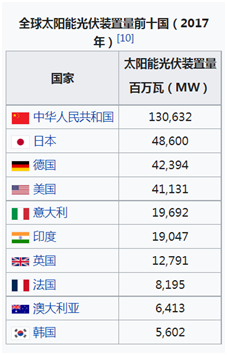
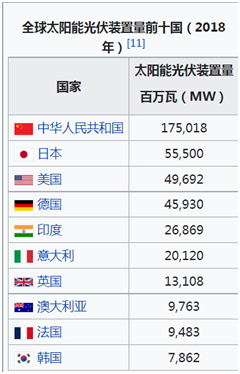
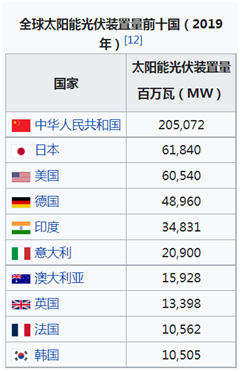
Photovoltaic refers to facilities that use the characteristics of photovoltaic semiconductor materials to transform solar energy into DC power. The core of photovoltaic facilities is solar panels.
The earliest small -scale application of China's photovoltaic industry is on artificial satellites. In 1975, China began to produce photovoltaic for the ground. In 1996, China formulated the "Light Project" plan to solve the problem of electricity difficulties in remote areas through wind and solar energy. In September 2002, Wuxi Shangde Sun Battery Production Line officially began production. From 2003 to 2005, due to the increase in demand in Europe, especially the German solar market, companies have begun to establish production lines. By 2007, China became the world's largest country in light.
Recalling the process of China's photovoltaic industry along the way, it can be said that it has experienced too many bumps and twists and turns. Trade protection, tariff issues, patent disputes, anti -dumping subsidies, 201 surveys, and 301 surveys. The familiar vocabulary has already experienced it. Most of the countries that may think of us in your mind have been in the field of photovoltaic.
In recent years, Chinese companies have also taken a lot of detours and learned a lot of lessons and negotiations. The Wuxi Shangde mentioned earlier fell in 2013.
In addition to trade disputes, China photovoltaic has also faced a stuck neck problem.
Polycrystalline silicon is the main photovoltaic semiconductor material. Before 2005, global polysilicon production was controlled by the United States, Japan, and Germany. They had a technical blockade and market monopoly in my country. At that time import.
In 2005, relying on independent research and development, China established the first polysilicon industrial production line in Luoyang to break through the technical blockade and achieved it from scratch. Subsequently, technology and equipment in Western countries entered China at high prices, and the prices of polysilicon rose crazy. Under the suppression of the price war and the European and American "double anti", only 12 companies in the country were difficult to maintain. Set down until the parity is generated. The cost advantage of the global photovoltaic industry is achieved.
The sunshine in the Chinese photovoltaic industry is not in vain, but the Chinese have worked hard to fight.
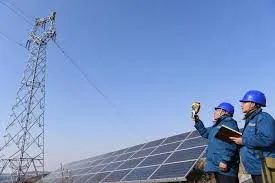
China is the world's largest market for solar photovoltaic and solar thermal energy, leading the global photovoltaic supply chain. China's photovoltaic component production accounts for more than 3/4, and the cumulative installed capacity ranks first in the world. China's market share in all key manufacturing stages of solar panels exceeds 80%.
China has formed a complete industrial supporting environment that contains almost all photovoltaic dedicated equipment, photovoltaic balance components and supporting auxiliary materials and auxiliary materials. This also makes China the most cost -effective place for all components to make solar photovoltaic supply chains. The cost is 10%lower than India, 20%lower than that of the United States, and 35%lower than Europe.
The International Energy Agency predicts that by 2025, the key components of global photovoltaic components will rely on China almost all. According to the production capacity prediction under construction, the share of polysilicon and silicon wafers will be as high as 95%in the global scale, and it will continue to maintain the dominance of the world worldwide. status.
2
The sun shines on Chinese photovoltaic, and it feels the most hot -buttocks in the United States.
As early as 2011, the United States launched a "double anti" survey, causing difficulties in China's photovoltaic industry.
Trump has launched a trade war in China, and China's photovoltaic is not spared. So far, three types of taxes have been paid to the United States such as batteries, components, and layers: anti-dumping and anti-subsidy taxes, 201 and 301 taxes, and the superposition tax rates are above 25%-40%.
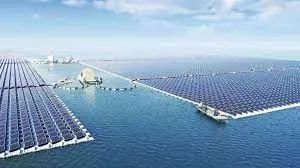
After the Bayeng government came to power, it not only continued the tariff policy, because the Democratic Party attached great importance to the problem of clean energy and climate change, but also stacked relevant measures.
In March, the U.S. Department of Commerce announced a survey of Cambodia, Vietnam, Malaysia, and Thailand to prevent Chinese photovoltaic companies from entering the US market through assembling products in Southeast Asia.
According to the US Clean Energy Association, about 80%of the current solar panels in the United States come from these four Southeast Asian countries. This is mainly because China's photovoltaic companies actively choose to transfer the transfer in order to avoid US tariffs.
Biden was anxious to block this vulnerability, but blocked himself first. In the month, hundreds of large US solar projects were shelved. The two -party groups wrote a letter to the government, saying that if the problem is not resolved, the supply of cutting panels and batteries may cause more than 100,000 US jobs, including about 18,000 manufacturing jobs. Faced with a large area of local photovoltaic industry, on June 6, the United States had to announce a 24 -month tariff exemption to photovoltaic components imported from the four countries in Southeast Asia.
On June 21, the United States had forgotten the pain, and the so -called "Uighurs forced Labor Prevention Law" began to take effect. According to the bill, the US Customs and Border Protection Agency prohibit any products related to the import of Xinjiang on the grounds of the so -called "forced labor" in Xinjiang, China, and a number of Chinese photovoltaic companies have been included in the ban list.
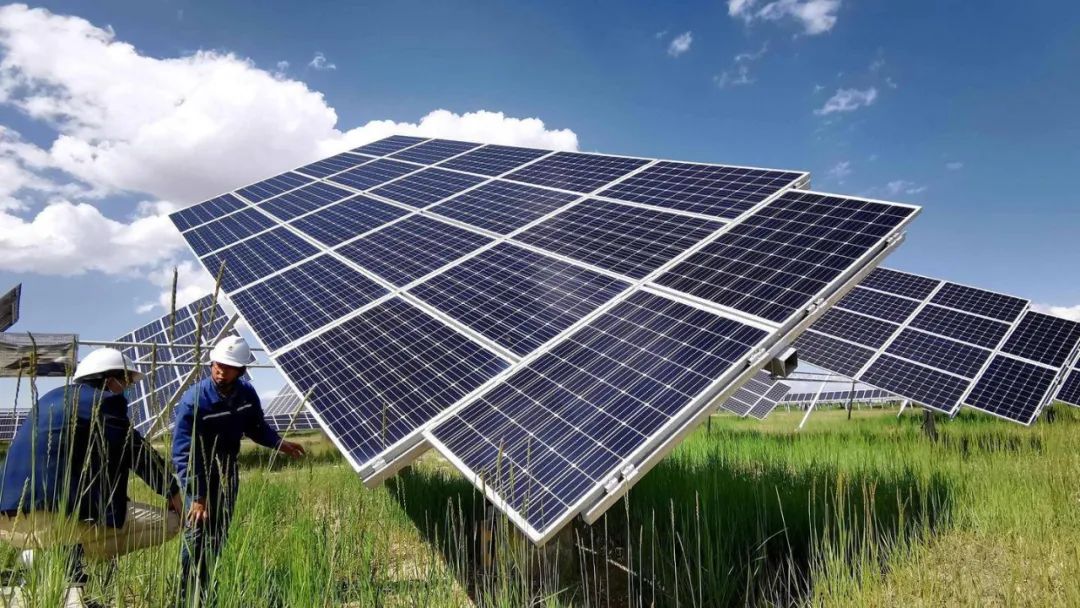
However, Xinjiang, China is the hub of solar supply chain. Xinjiang has a number of large industrial silicon and polysilicon manufacturers, which are key materials for making solar panels. The United States is anxious to change this situation, but at the same time, it will hit the national photovoltaic industry a huge blow again.
In the second quarter of this year, the US solar installed capacity decreased by 12%year -on -year. This year, the US solar installation volume is expected to be the lowest level since 2019.
According to Bloomberg, since June of this year, US Customs has detained as many as 3 Givava's imported photovoltaic components; by the end of this year, it is expected that as many as 9 to 12 Java's photovoltaic components will be prevented from entering the US market. This shows that the United States -related Act is a significant impact on trade flow; the interruption of photovoltaic trade between the United States and China may slow down the expansion of the US renewable energy industry.
On August 16th, Biden signed the "Act of Angle Blaom" to support the development of the new energy industry in the form of fiscal incentives and subsidies. This is another attempt for the United States to exclude China from the supply chain after the "Chip and Science Act".
Will this effort succeed this time? Outsider public opinion is still not optimistic, because more than 50%of the US photovoltaic components rely on Chinese or Chinese companies to produce bases overseas, and American self -sufficient capabilities account for only 14%of its shipments.
Relevant experts believe that "the US photovoltaic supply capacity and demand are seriously imbalanced, and cracking down on Chinese photovoltaic can not bring benefits to the United States, which makes it difficult for its industries. Consumers will eventually affect the efficiency and development prospects of the new energy economy in the United States. "
Of course, don't look at the US government grinning so much. The United States has unilaterally relied on the Chinese photovoltaic industry. The US market's share in the Chinese photovoltaic industry is very small. The largest buyer in China is Europe, and the China -Europe photovoltaic industry cooperation has maintained a better momentum.
Today, the global energy crisis and energy anxiety, Europe accelerates new energy transformation in the anxiety of "either used for cooking, either for heating". The number of new energy options came over, and photovoltaic is the most mature.
Individual countries are willing to toss and let it toss. Cooperation will bring benefits, and wall -building can only be separated by themselves. After all, the sun will only give a photo on the face that is willing to face it.
Pictures from the network
Source: Make up one knife
- END -
Tai'an: Promote the Chinese Medicine Culture of Chinese Centers for Chinese Medicine
Qilu.com · Lightning News, August 25th, inherited Chinese medicine, is to protect the achievements of ancient Chinese scientific and cultural achievements, and it is also a key to open the treasure
The Chinese People's Liberation Army will conduct important military training operations and organize real bombs to shoot
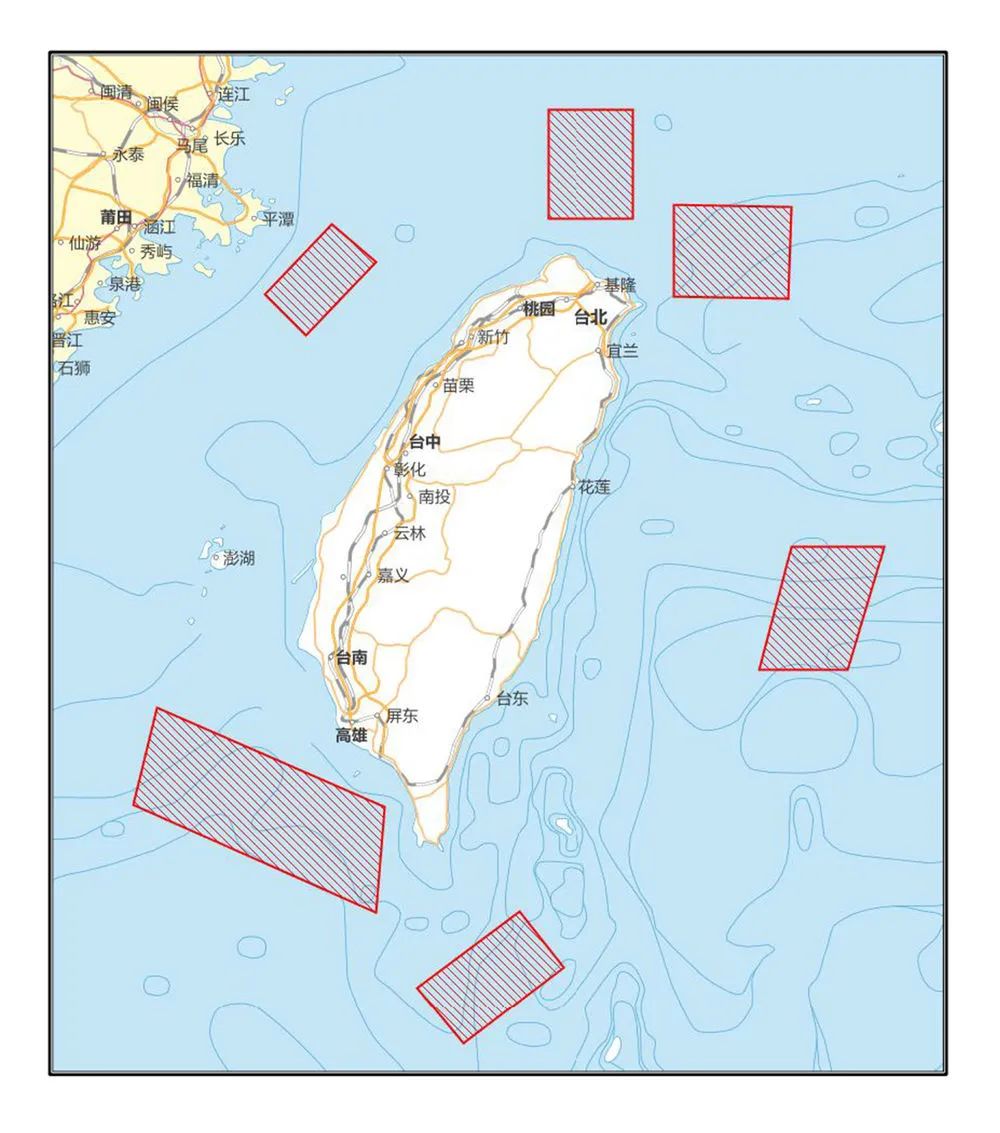
On August 2, 2022, Xinhua News Agency's rights announcement: The Chinese People's ...